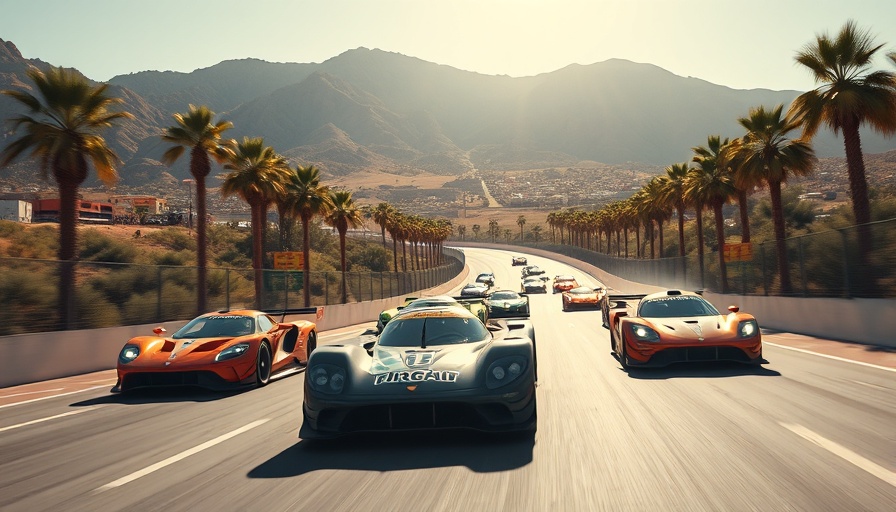
The Clash of Giants: Understanding NASCAR and IndyCar's Competing Timelines
Fans of both NASCAR and IndyCar were left reeling after a significant clash in programming.
The IndyCar race at Thermal, which aired on FOX, ran directly at the same time as the NASCAR Cup Series race at Homestead, which was featured on FOX Sports 1. This overlap led to abrupt frustration as viewers had to choose between two of motorsport's biggest spectacles. The fallout was glaring: the viewership for IndyCar plummeted to 704,000 from over 1.4 million during the previous race in St. Pete, marking an alarming 50.3% drop.
Programming Challenges Explained
In a recent statement from FOX Sports, the reasons behind this scheduling predicament were laid bare. A representative revealed that conflicts are almost unavoidable whenever IndyCar races are held on the West Coast. Timing regulations dictate strict schedules that cannot accommodate both series effectively. They stated, "When IndyCar is on the West Coast, going head-to-head with NASCAR is unavoidable because we can’t start the IndyCar race at 9 a.m. PT /12 p.m. ET (too early out there) before NASCAR (at 3 p.m. ET)." This means that fans must often make sacrifices, choosing between racing events that dominate their weekends.
The Importance of Timing in Sports Broadcasting
Timing is not just crucial for racers but for network executives as well. NASCAR's substantial audience often translates into higher advertising revenues, making it more challenging for a younger series like IndyCar to compete for viewer attention. It’s a reminder of the cutthroat nature of television sports programming.
The Fallout: Viewership Implications
The consequences of poor scheduling can be severe. For IndyCar, this unfortunate clash meant not just a number drop; it translated into lost opportunities for building a stronger fanbase. Lower ratings may hinder sponsorship deals, which are critical for the survival of these teams. Constructors need visibility to fund their operations, and a significant dip in visibility might send shockwaves through race operations.
A Broader Lens: Viewing Preferences in Motorsports
This situation forces fans to reconsider their engagement with motorsports. As the audience grows more fragmented in an age where streaming services abound, it becomes increasingly important for sanctioning bodies to consider innovative broadcasting solutions. Could dual-screen viewing setups or split broadcasts offer a solution for fans eager to watch both events? It’s a small change that could potentially mitigate fan frustration.
Future Predictions: What Lies Ahead for IndyCar and NASCAR?
Looking down the road, there will be another clash as IndyCar moves onto Long Beach, beginning about 90 minutes after the NASCAR race at Bristol. While these series may not run head-to-head directly, the proximity of their start times still raises concern about splitting audiences. With the constantly evolving landscape of sports broadcasting, the challenge remains: how can both series thrive without sacrificing the viewer experience? The cautious optimism lies in the fact that FOX has pledged no direct conflicts for the remainder of the 2025 racing season—an assurance that might set the foundation for a stronger future.
Embracing Change: The Decision-Making Landscape
As fans, being engaged in the conversation about race times can steer the future of how events are scheduled. Consider voicing your concerns directly to broadcasters or participating in discussions on forums or social media platforms. Your voice has the power to influence how races are organized, possibly leading to more convenient viewing arrangements in the future.
The clash of programming during the NASCAR and IndyCar events highlights significant issues within the realm of sports broadcasting. The responsibility now rests not just on the networks but also on the fans. With plans for future races being laid, we have opportunities to advocate for better scheduling choices and diversify how we consume motorsports. Get engaged—because every viewer counts.
 Add Row
Add Row  Add
Add 




Write A Comment